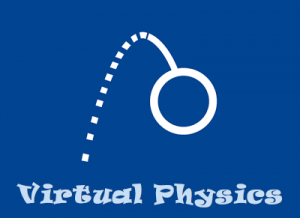
Summary
Virtual Physics is tool for numerically integrating the differential equations of motion for many different situations that arise in physics. It can be useful for introductory students who have not yet taken differential equations by allowing them to investigate important problems in physics that they are not mathematically prepared to solve. It also allows advanced students to study problems for which analytical solutions do not exist.
 The equations of motion for a classical system obtained either from Newton’s Second Law or the Euler-Lagrange equation are generally second-order differential equations. By introducing intermediate variables these equations can be written as a system of first-order differential equations and then entered symbolically into Virtual Physics. Values for any constants can be specified and Virtual Physics will solve for the unknown coordinates and velocities in the equations of motion using Euler, Runge-Kutta, or Cash-Karp algorithms. Additional waveform quantities to be calculated following the integration, such as potential or kinetic energies, can be defined from the coordinates, velocities, and constants. All of the integrated and calculated waveforms can be displayed graphically or in tabular form and can be exported to tab-delimited or comma-separated-value files.
The equations of motion for a classical system obtained either from Newton’s Second Law or the Euler-Lagrange equation are generally second-order differential equations. By introducing intermediate variables these equations can be written as a system of first-order differential equations and then entered symbolically into Virtual Physics. Values for any constants can be specified and Virtual Physics will solve for the unknown coordinates and velocities in the equations of motion using Euler, Runge-Kutta, or Cash-Karp algorithms. Additional waveform quantities to be calculated following the integration, such as potential or kinetic energies, can be defined from the coordinates, velocities, and constants. All of the integrated and calculated waveforms can be displayed graphically or in tabular form and can be exported to tab-delimited or comma-separated-value files.
Features and Benefits
- Numerically integrates differential equations of motion for classical mechanics systems.
- Useful both when solutions can and cannot be obtained by standard analytical techniques.
- Systems are described symbolically using user-defined variables and constants.
- Users can select from Euler, Runge-Kutta, or Cash-Karp integration algorithms.
- Reports showing the system definition and the integration results can be generated.
- Supports saving results in tab-delimited text and comma-separated value formats.
Acknowledgements
Virtual Physics was originally inspired by a DOS-based program, called MOTION, that was written by Professor Richard Hackney, a former professor of physics and astronomy at WKU who served as a mentor to Professor Harper during his undergraduate years and early years as a faculty member. MOTION performed similar functions as Virtual Physics but with a very different user interface.
